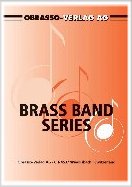We've found 526 matches for your search. Order by
Results
-
 £54.20
£54.20PRELUDE, THEME AND VARIATIONS (Euphonium Solo with Brass Band) - Newsome, Roy
Grade: Difficult.
Estimated dispatch 7-14 working days
-
 £50.90
£50.90RAINY DAYS AND MONDAYS (Baritone/Euphonium Solo with Brass Band) - Fernie, Alan
Grade: Medium.
Estimated dispatch 7-14 working days
-
 £50.90
£50.90ROAD AND MILES TO DUNDEE, The (Euphonium Solo with Brass Band) - Fernie, Alan
Grade: Easy/Medium.
Estimated dispatch 7-14 working days
-
 £54.20
£54.20ROMANTICA (Euphonium Solo with Brass Band) - Woodfield, Ray
Grade: Medium.
Estimated dispatch 7-14 working days
-
 £50.90
£50.90SHOWCASE (Euphonium Solo with Brass Band) - Trenet, Charles - Woodfield, Ray
Grade: Medium/Difficult.
Estimated dispatch 7-14 working days
-
 £50.90
£50.90SILENT NIGHT (Euphonium Solo with Brass Band) - Gruber, Franz - Freeh, Mark
Grade: Easy.
Estimated dispatch 7-14 working days
-
 £50.90
£50.90SO DEEP IS THE NIGHT (Euphonium Solo with Brass Band) - Chopin, Frederic - Fernie, Alan
Based on a melody by Chopin. Grade: Medium.
Estimated dispatch 7-14 working days
-
 £50.90
£50.90SPRIG OF THYME, The (Baritone/Euphonium Solo with Brass Band) - Smith, Sandy
Grade: Easy.
Estimated dispatch 7-14 working days
-
 £50.90
£50.90SUMMERDREAM (Euphonium Solo with Brass Band) - Rodenmacher, Luc
Grade: Easy/Medium.
Estimated dispatch 7-14 working days
-
 £50.90
£50.90SUMMERTIME (Euphonium Solo with Brass Band) - Gershwin, George - Fernie, Alan
Grade: Medium.
Estimated dispatch 7-14 working days
